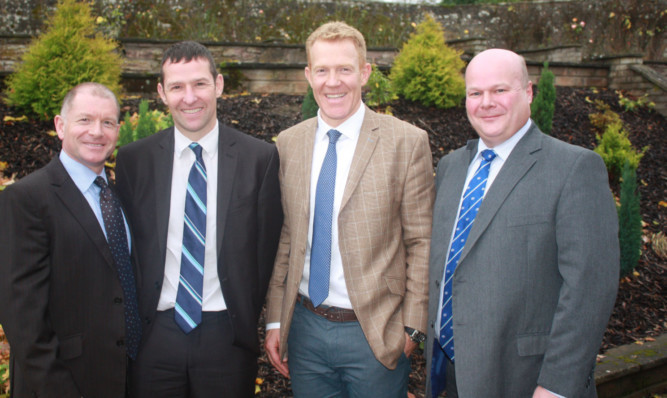Cereal consumers have taken a lot of comfort over the last 12 months from the increase in stocks but that could all change very quickly according to Bruce Ferguson, general manager in Scotland for Frontier Agriculture.
Speaking at a Bank of Scotland seminar in Perth he pointed out that volatility was here to stay.
Weather would continue to be a major factor with only the EU28 among all the major growing areas benefiting from a generally stable climate.
The rally in wheat prices in recent days was because of a number of factors but chief among these was a concern about cold dry weather in Russia.
The market for malting barley was more predictable than that for wheat simply because so much of the crop was grown in Europe’s generally benign climate.
That did not mean, however, that quality was guaranteed with grain nitrogen contents often very variable.
Mr Ferguson said: “The supply side of the equation is volatile but the demand side is remarkably steady showing a 40m tonne increase in consumption annually.
“This will continue and may well increase faster than most people think.
“There are predictions of a nine billion world population by 2050 but looking at the growth curves I think we could be there much sooner.”
Not only that but there was incontrovertible evidence of a growing middle class in the developing world.
In India the middle class had been confined to only one million people 16 years ago.
Now it was believed to number 106m and these were people who would demand and could afford more and better quality food.
Mr Ferguson said he had concentrated on India because it was the country with the world’s largest area of arable land.
Alarmingly farm size was decreasing rather than increasing with the average size now only 2.87 acres.
Farm size had halved in 40 years and more worryingly 60% of the arable land was at risk because of fertiliser misuse.
Mr Ferguson also had a positive message on world grain stocks.
“Around 40% of world wheat stocks are held in China and that will never come on to the market,” he said.
“That cuts stocks to 60 days’ supply which is not a lot.”
Bank of Scotland’s head of agriculture for south and south-east Scotland, Sandy Hay, had already given “Backing your ambition” as a conference theme and little Mr Ferguson said would make anyone think ambition would be thwarted as long as farm businesses were capable of coping with volatility.
Mr Ferguson suggested Scottish agriculture had to home in on understanding basic management principles.
Many farmers already had these skills but far too may did not.
As far as yields were concerned he had hopes the 20-year yield plateau might be nearing an end.
This year’s weather had been perfect for cereal growing.
The Scottish cereal crop which yielded 2.96m tonnes on a 10-year rolling average had reached 3.4m tonnes this year.
“That shows that we have nonetheless extreme price volatility remaining the biggest challenge,” Mr Ferguson said.
Wheat had dropped by more than £70 per tonne in a season and the only way to cope was to make good use of contracts and pools.
“If the first new Basic Payment Scheme is not paid out until March or April in 2016 instead of December 2015 it will put a lot of farms under a lot of pressure,” he added.
Mr Hay said he was well aware of the potential for problems if payments were late and that banks would need to work closely with customers to help them cope.
“We have already spoken to NFU Scotland about this and know it is a great concern,” Mr Hay said.
“The Scottish Government have been very good so far at making payments in early December and I hope this continues otherwise there will be a serious impact on farm businesses which in turn will have a huge impact on our business.
“In early CAP consultations we asked primarily for a system that was simple and capable of making payments on time.
“It certainly isn’t simple.”
* The conference was also addressed by BBC Countryfile presenter and Bank of Scotland ambassador Adam Henson.
A report of his speech will appear in The Courier in coming days.
